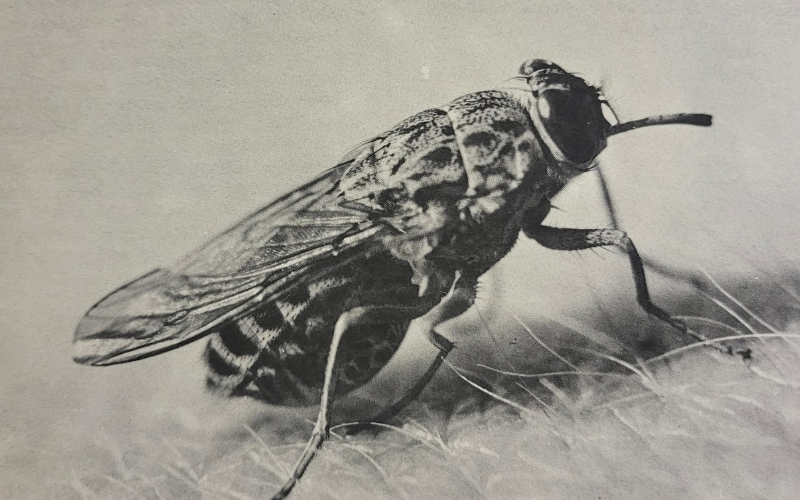Tsetse Fly
Scientifically known as Glossina, are a species found only in tropical Africa. The name Glossina originates from the Greek word 'glossa', which means the tongue, referring to the insect's prominent proboscis. Glossina consists of 22 different species, each with unique habits and habitats. Despite these differences, all species share the same structural features. When resting, the abdomen is concealed by the wings, which cross over each other like closed scissors and extend beyond the tip of the abdomen. Tsetse flies are typically dark brown or yellowish-brown, with smoky wings. Some species have black bands on their abdomens, but in general, they are inconspicuous insects that blend into their surroundings.
The female tsetse fly mates on the third or fourth day of free flight, usually once and remains inseminated for life. Instead of laying eggs, the embryo develops within the egg retained in the abdomen of the mother fly. After hatching, the larva remains inside the mother's abdomen, feeding on the milk glands for nourishment. When fully developed, the larva emerges and burrows into the soil to pupate. The puparium is brownish-black to black and has two distinct lobes on one end. The pupal period can vary from three to thirteen weeks, depending on the surrounding temperature.
Tsetse flies are blood-feeders, solely relying on mammalian, reptilian, or avian blood. They are harmless when hatching from their pupa. However, if they feed on a host infected with a trypanosome, a unicellular blood parasite, the fly may become infected and transmit the parasite to humans or domestic animals. Two species of trypanosomes cause human trypanosomiasis or sleeping sickness, while three other species cause nagana, a fatal disease in cattle, horses, sheep, goats, and dogs. The fourth species causes a fulminating disease in pigs.
It is important to note that tsetse flies are not typically found in urban areas. However, travelers to rural areas of tropical Africa, such as Zimbabwe, should take precautions to avoid bites from these flies. Protective clothing, insect repellent, and avoiding outdoor activities during peak fly feeding times can help reduce the risk of transmission. In addition to its natural wonders and rich cultural heritage, visitors to Zimbabwe can also learn about tsetse flies and their impact on the environment and local communities.
